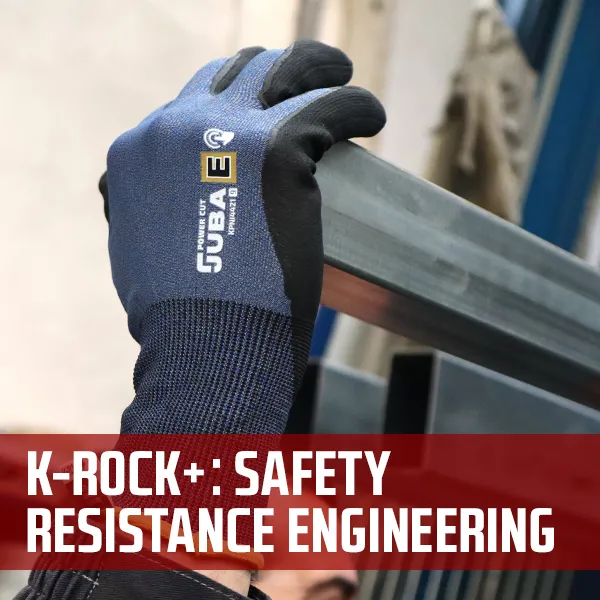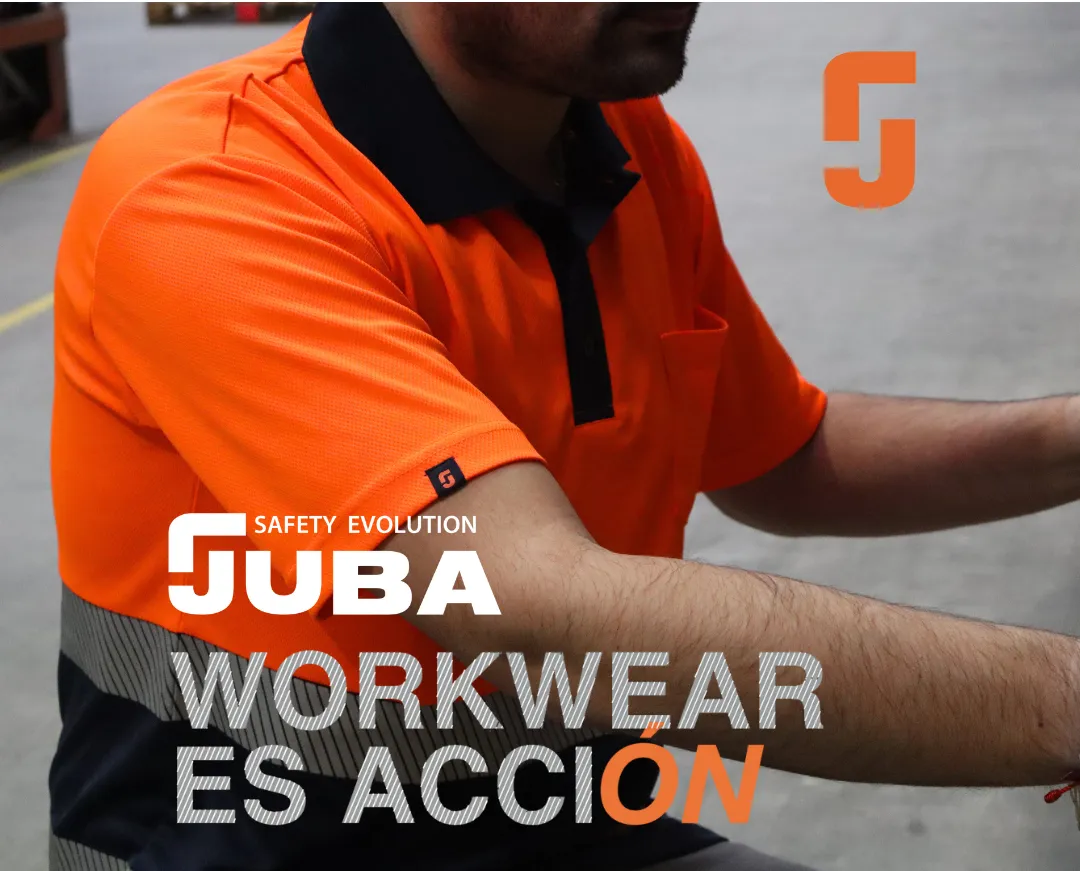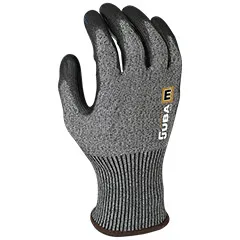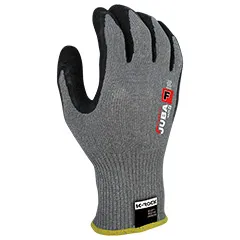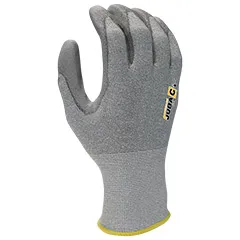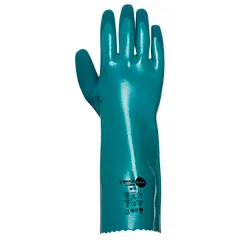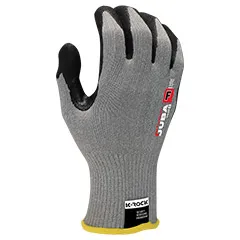K-Rock +
Photovoltaic Sector
The photovoltaic sector is booming thanks to a strong trend towards generating increasingly comprehensive and sustainable energy solutions.
Although the photovoltaic effect has been known since the nineteenth century, it was not until the 50s that these panels began to undergo significant development. They were initially used to supply electricity to communication satellites, and are now one of the most recurrent renewable power generating technologies.
Among its major virtues, photovoltaic power stands out for its modular appearance, which allows for constructions ranging from huge ground-installed plants to small roof panels.
The growth of the photovoltaic sector is being recorded both on land and in self-consumption for the domestic and industrial sectors. Such rapid expansion has led to the search for ways to reduce risks in everything involving the commissioning, installation and maintenance of these systems.
The current is very high in photovoltaic applications, hence it is vital to select specific gloves so that workers, and the system itself, are protected from potential hazards. Among the greatest risks to the hands are frequent contact with electrical systems and high temperatures, as well as inclement weather, blows, and the handling of heavy objects, among others.
Tower installation
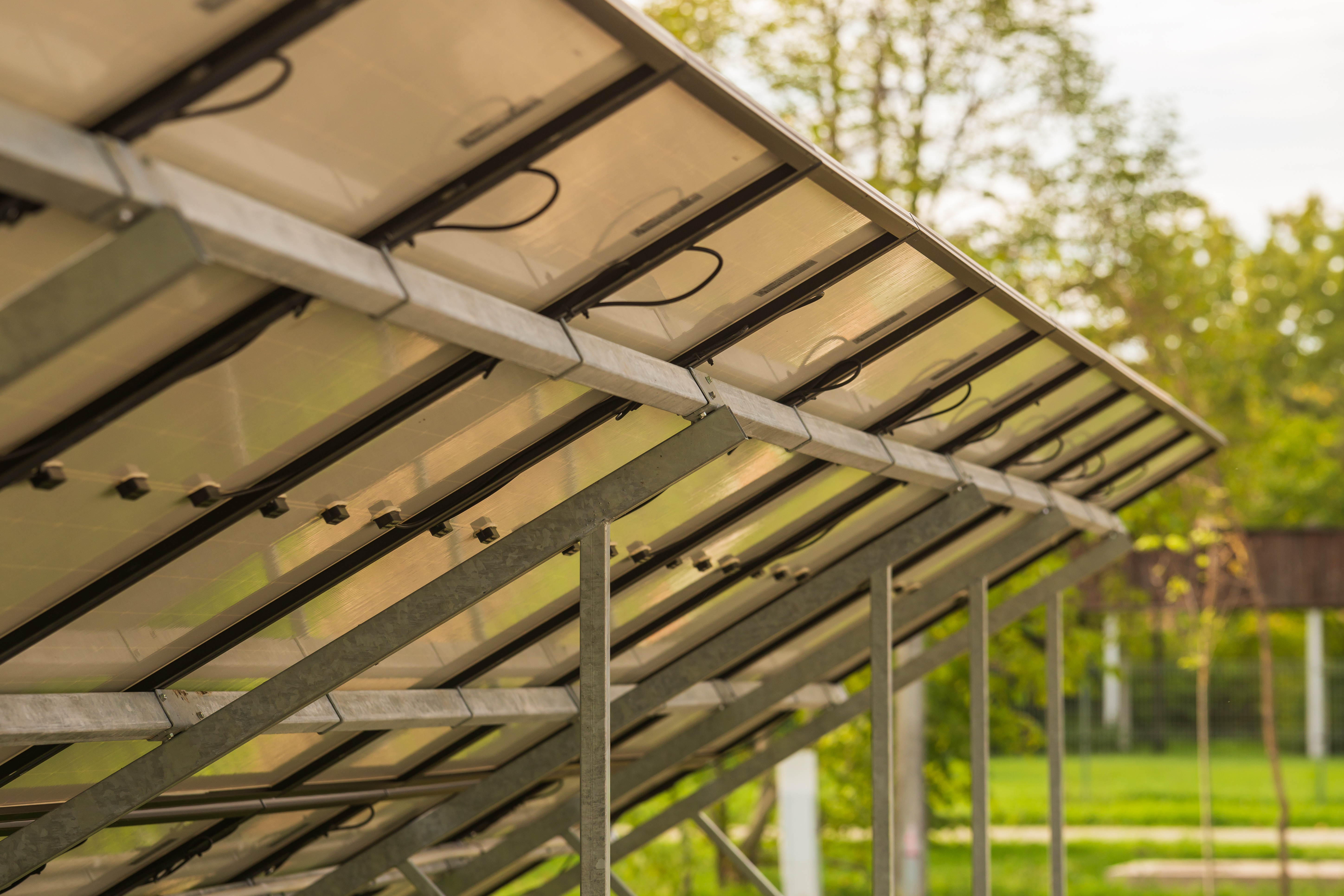
This process begins with the manual coupling of the supporting structure of the solar panels to the wind farm weather station. Attached to the concrete floor using chemical or mechanical anchor screws, this installation is fitted with Franklin-type lightning arresters, also known as single pickup points, suitable for external lightning protection.

Gloves by phases
Installation
For professionals, this phase involves a high risk of being cut or pierced, in addition to the need for great dexterity in the hands and a good grip.
Distribution of material
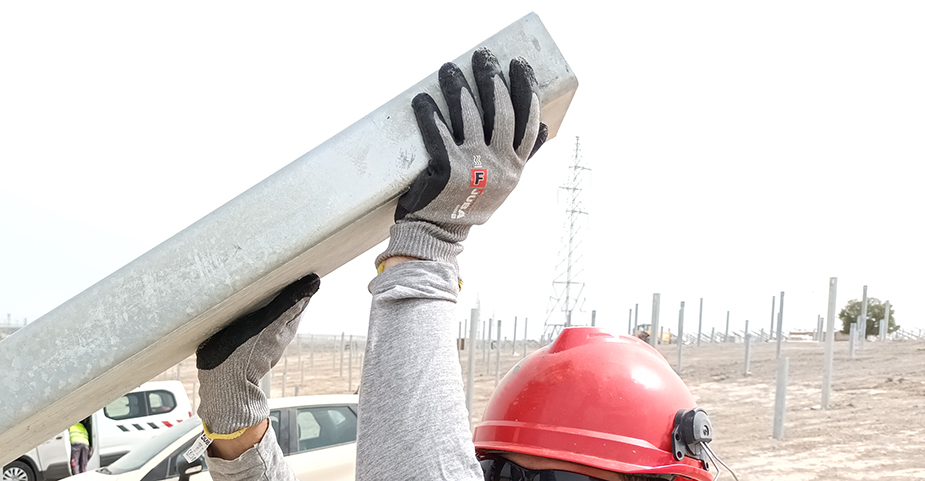
The distribution of metal poles to secure structures vertically is normally performed manually by professionals working with machinery equipped with lifting forks.

Gloves by phases
Distribution of material
In this task, a glove is required for workers that offers great cut protection from the sharp edges of the metal profiles, good dexterity, and very good gripping properties to hold the pieces firmly and avoid any dangerous slipping.
Driving
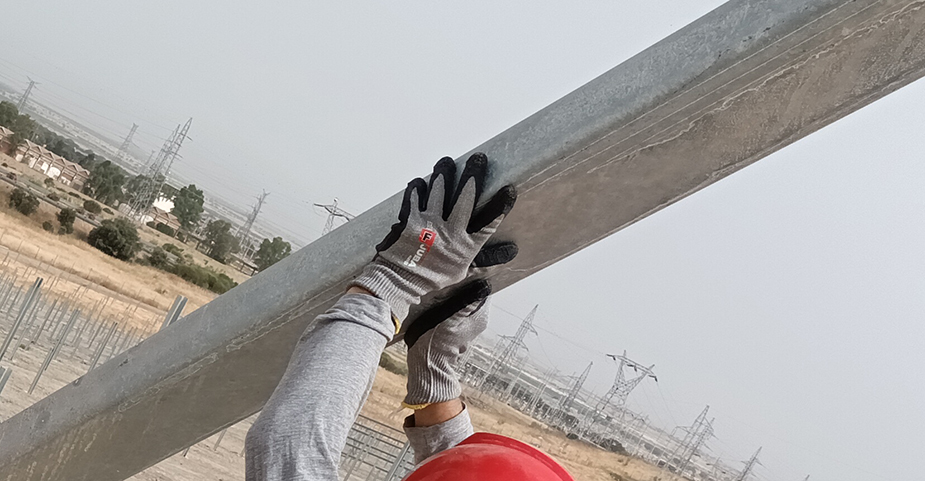
The structural posts are the support for the photovoltaic installation. In many cases, this post is essential in providing the necessary to withstand the forces applied and transfer them safely to the ground.
All types of fixed structures, both galvanized steel and aluminium, can be used in the post driving work and to perform different types of driving, bolting or concreting of the structure in the ground. In any case, it is a manual process involving percussion machinery, which in addition to high-speed rotations involves hammering. This means that it not only rotates but also hits the material in which the holes are made.

Gloves by phases
Driving
On this occasion, a work glove is again required that offers great cut protection from the sharp edges of the metal profiles, good dexterity, and very good gripping properties to hold the pieces firmly and avoid any dangerous slipping.
Installation id structures
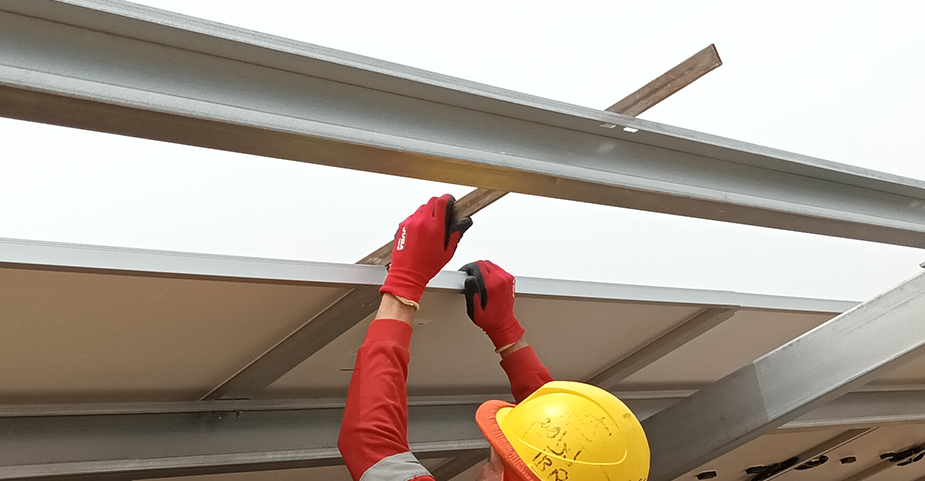
The metal substructures will be installed on the poles, which will act as support for the photovoltaic panels. In this procedure, electric and battery-powered tools (screwdrivers) are used, in addition to other manual machines and torque wrenches.

Gloves by phases
Installation id structures
This phase again involves a glove for professionals that provides a great deal of grip for the safe handling of tools (without slipping), great cut protection (due to continuous chafing with the sharp edges of the profiles), and very good dexterity.
Cable laying and connections
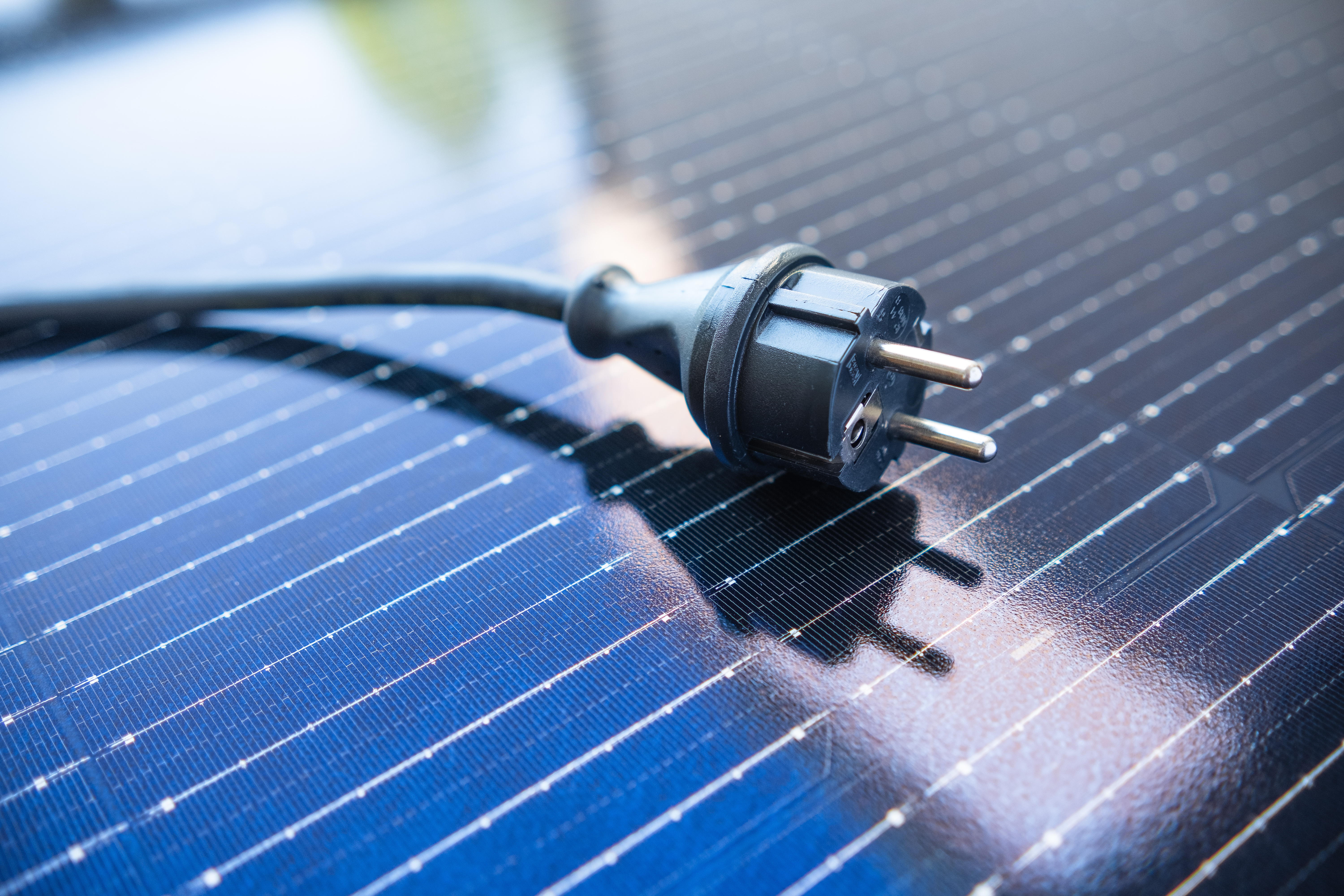
The positioning of the cables in order to then be able to power the panels and all their connections in the PV station requires a glove with great dexterity, grip, touch, and moderate cut protection.

Gloves by phases
Cable laying and connections
In addition, glove should have electrostatic dissipation to avoid discharges that could damage the electronic components and connectors.
Cement batch preparation
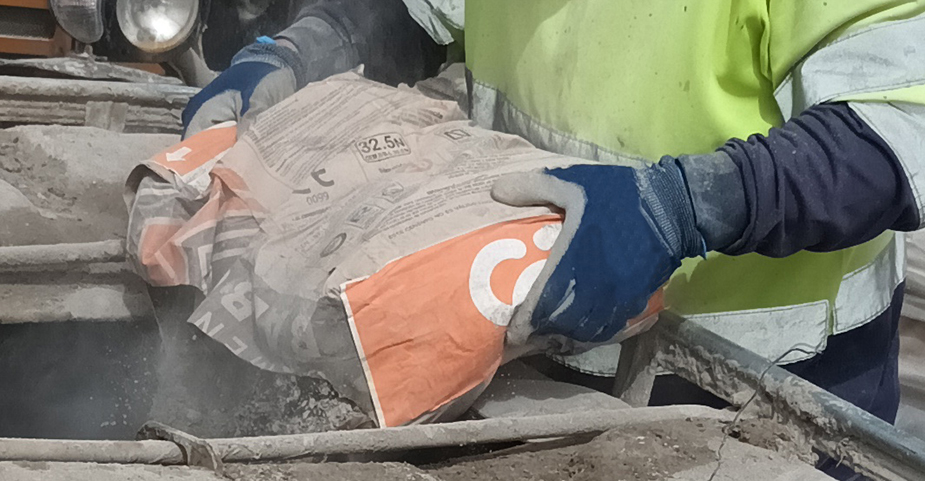
The main ingredients of mortars are sand, cement and water. In particular, its function will be to act as reinforcement to the foundations of the metal piles of the solar panel structure.
Blends of cement and water are made up, which may contain different chemical additives depending on the application temperature. Depending on requirements, these may be setting retardants or accelerants.

Gloves by phases
Cement batch preparation
Responsible operators may be exposed to the chemical hazards associated with liquids and dust, as well as cut hazards from box cutters.
Panel installations
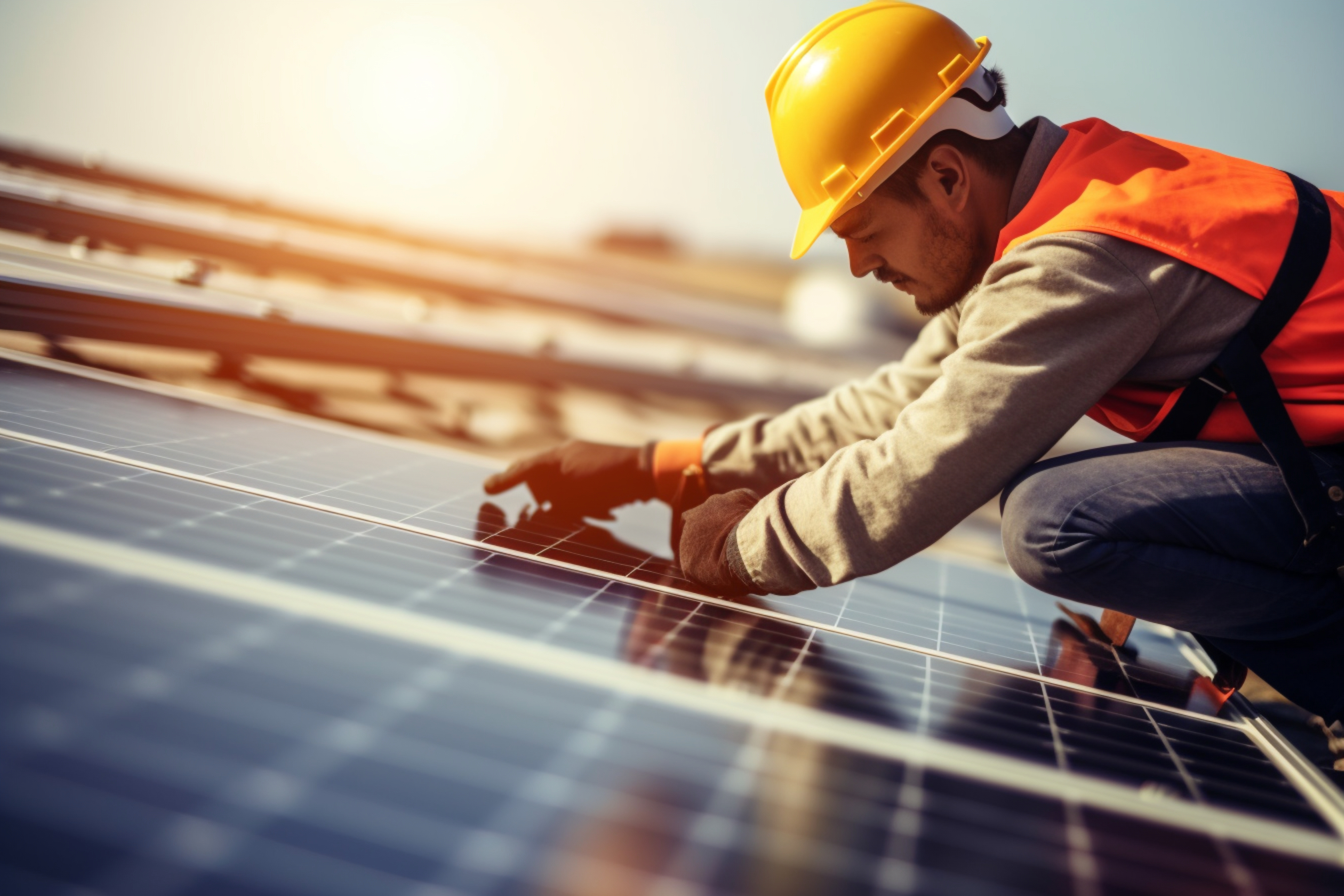
The metal structures will form the base for the photovoltaic panels on the substructures in work that requires great manual dexterity of professionals due to the constant handling of battery-powered tools, and to having to apply bolts on the inside of the profiles.

Gloves by phases
Panel installations
Those responsible for this process must wear a glove with great cut protection, given the continuous contact with and slipping of the fingers over the inner edges of the metal profiles during the bolting process. Furthermore, the protection must have extra reinforcement between the thumb and index finger because this is an area of continuous friction with the support profile and the panels themselves.
